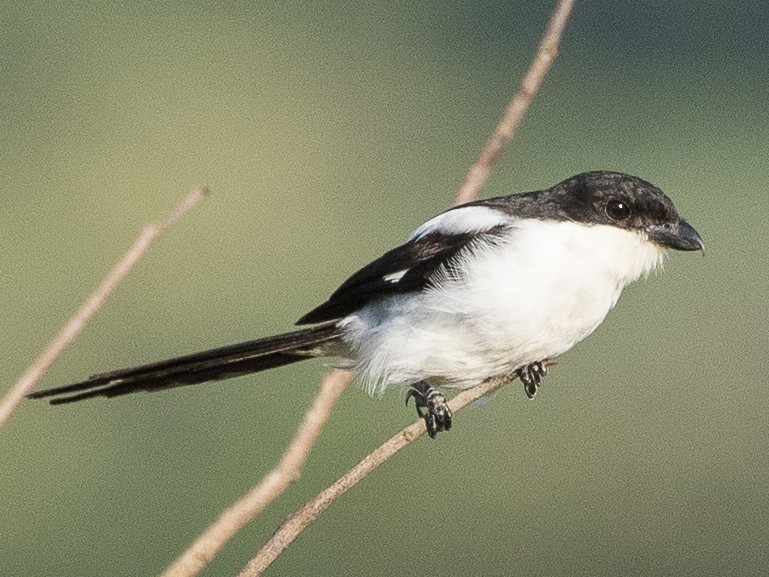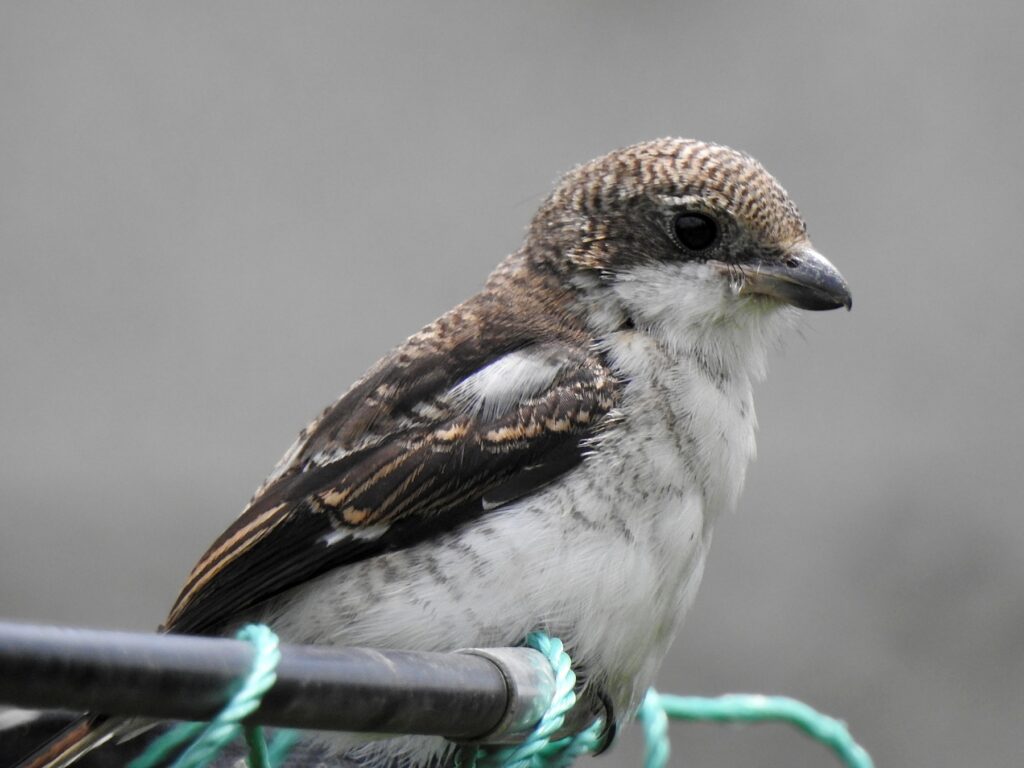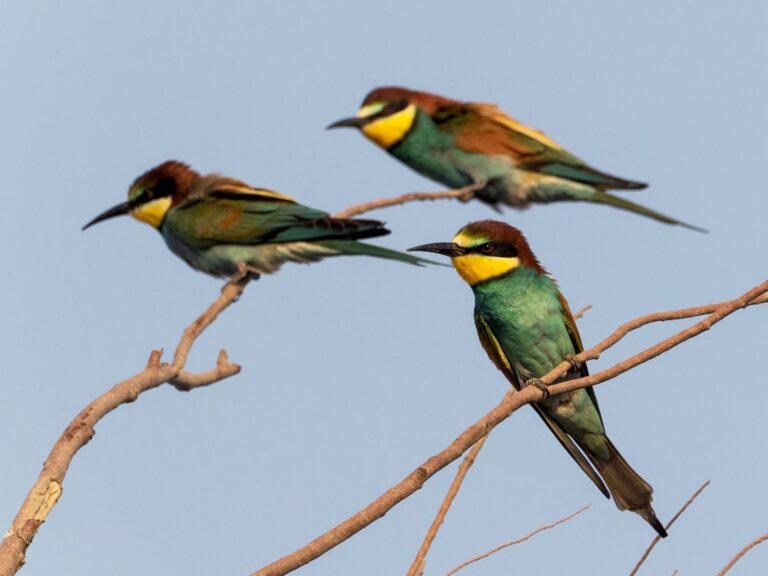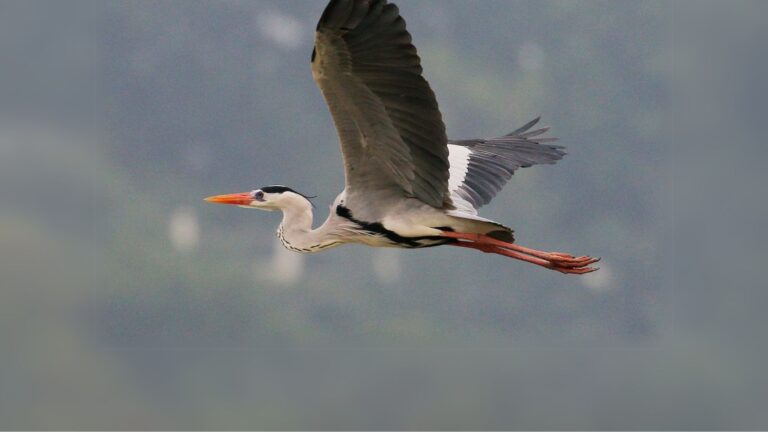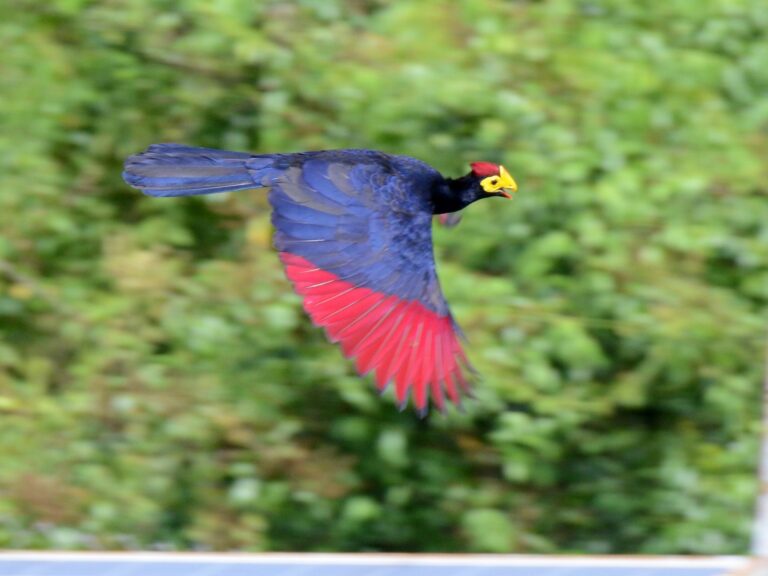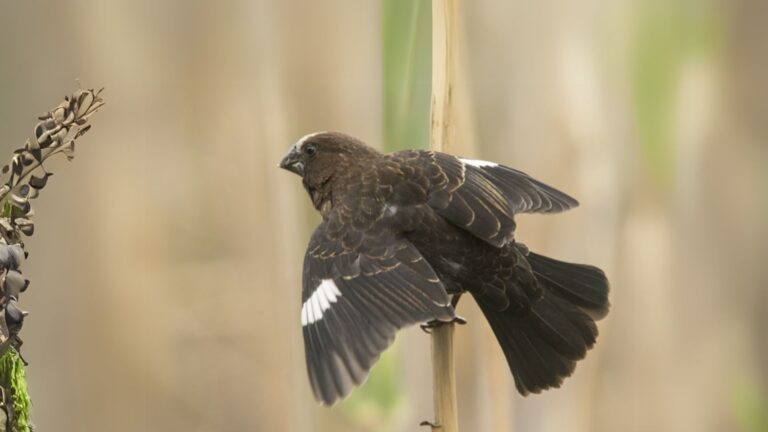Northern Fiscal: Discovering the Elusive Bird of African Woodlands
The Northern Fiscal is a striking bird known for its sharp looks and resourceful hunting style. Recognized by its bold black, white, and gray coloring, you’ll probably spot it across open grasslands and bushy areas in Southern Africa.
Bird watchers and nature lovers often seek out this unique species because of its interesting behavior and attractive appearance. There’s just something about the way this bird carries itself that draws people in.
People often wonder about the Northern Fiscal’s place in nature. It plays a key role as both a predator and a source of food for larger animals in its ecosystem.
You can dig deeper into its range, importance, and the challenges it faces by reading research on fiscal viability and ecological roles of northern species.
Key Takeaways
- Key facts about the Northern Fiscal’s identity and traits
- Where the Northern Fiscal lives and why it matters
- Visual and research resources for learning more
Taxonomy and Classification
Northern Fiscal sits comfortably in bird taxonomy, with a clear place among its relatives. Bird experts group it at several levels, each revealing something about its connections to other birds.
Family Laniidae and Genus Lanius
The Northern Fiscal belongs to the family Laniidae, known as the shrikes. Shrikes have hooked bills and a pretty wild habit—impaling prey on thorns or wire.
Within this family, its genus is Lanius. Birds in this group share black masks, strong beaks, and a boldly aggressive hunting style.
Lanius species show up in Europe, Africa, and Asia. All shrikes here are part of the songbird order, Passeriformes, which is actually the largest order of birds.
Laniidae, especially Lanius species, have adapted to eat insects, small mammals, and even other birds. Their hunting style can really surprise people who are new to shrikes.
Scientific Name: Lanius humeralis
The Northern Fiscal’s scientific name is Lanius humeralis. Scientists use this name to talk about the bird across languages and regions.
Lanius means “butcher” in Latin, which honestly fits the bird’s predatory vibe. The species name humeralis refers to the shoulder region, hinting at the bold coloring there.
Sometimes you’ll see it called L. humeralis, which is just shorthand for the same bird. Researchers rely on this name to study its behavior, distribution, and relationships with other shrikes.
Reliable guides and databases stick with this binomial name to avoid confusion, wherever the bird shows up.
Subspecies of Northern Fiscal
Several recognized subspecies fall under the Northern Fiscal umbrella. Notable ones include Lanius humeralis humeralis (the nominate form), Lanius humeralis capelli, and Lanius humeralis smithii.
Each subspecies shows differences in size, plumage, or range. For example:
| Subspecies Name | Distinguishing Features | Main Range |
|---|---|---|
| L. humeralis humeralis | Classic black and white pattern | Eastern Africa |
| L. humeralis smithii | Slight difference in breast coloring | West and Central Africa |
| L. humeralis capelli | Paler and smaller | Southern Central Africa |
Scientists study these subspecies to track how the species adapts to different environments. Birdwatchers often scan for these subtle plumage differences to figure out which subspecies they’re seeing.
If you want more details on these and other birds, specialized bird books and scientific resources are the way to go.
Physical Characteristics and Plumage
The Northern Fiscal is a medium-sized shrike with a striking appearance. Its bold black and white plumage, plus its posture, make it stand out in open habitats.
Distinctive Markings
The Northern Fiscal grabs attention with its sharp black and white coloring. It sports a black cap on its head that runs down to the nape, and a thick black “mask” streaks through the eye to the cheek.
Black wings with bright white patches flash in flight. Its back and upper tail are black, contrasting with the white underparts and outer tail feathers.
Juveniles look a bit duller, but you can still see the contrast. The beak is short, strong, and has a slight hook—just right for catching and handling prey.
Some quick features:
- Black facial mask
- White underparts
- Bold white wing patches
- Short, hooked beak
- Long black tail with white edges
These traits make the Northern Fiscal pretty hard to mistake, even among other shrikes.
Size and Dimensions
The Northern Fiscal is medium-sized for a shrike. Adults typically measure about 21–23 cm long. Wingspans range from 24 to 29 cm. Most weigh 35 to 45 grams, though it varies a bit by sex and region.
Males and females look almost identical, so it’s tough to tell them apart just by looking. That long tail helps with balance when they perch or dart around open spaces.
Here’s a quick breakdown:
| Feature | Measurement |
|---|---|
| Length | 21–23 cm |
| Wingspan | 24–29 cm |
| Weight | 35–45 grams |
Comparison With Related Shrikes
People sometimes confuse the Northern Fiscal with other African shrikes, but its plumage and shape set it apart. Compared to the Common Fiscal, it shows a broader white shoulder patch and more white on the outer tail.
It’s generally slimmer and longer-tailed than other shrikes in the same region. Unlike the Svalbard Rock Ptarmigan, which changes its look for the seasons, the Northern Fiscal’s feathers stay the same year-round.
Among shrike species, it has a sharper contrast between black and white. Its upright, alert posture just adds to its strong silhouette. If you’re into bird variation, this manual on Neotropical birds goes deeper.
Distribution and Habitat
The Northern Fiscal pops up all over sub-Saharan Africa. Its distribution, habitat choices, and presence in spots like Ethiopia, Angola, Guinea, and Uganda make it a bit of a star among African shrikes.
Geographic Range in Africa
You’ll find the Northern Fiscal (Lanius humeralis) all across sub-Saharan Africa. Its range stretches from Senegal in the west to Ethiopia in the east, and as far south as Angola and northern South Africa.
It pretty much skips dense tropical forests and avoids the driest deserts. The bird sticks to regions with some rainfall and a mix of open habitats. In central Africa, it hangs out where there’s tree cover, but not deep rainforest. Very dry or sandy places don’t appeal to it; it prefers more temperate or savanna-like spots.
Distribution Map and Regions
A detailed map of the fiscal shrike’s distribution shows it scattered across much of Africa, missing mainly from the Congo Basin and the Sahara.
Key regions you’ll find it include:
- West Africa: Senegal, Guinea, parts of Nigeria
- East Africa: Ethiopia, Kenya, Tanzania
- Central Africa: Cameroon, Central African Republic, parts of Angola
- Southern Africa: north of the Limpopo River
Population densities run highest in open savanna and farmed land. Higher altitudes, like highland grasslands, can also host plenty of these birds.
Preferred Habitats
Northern Fiscals like open places—savannas, grasslands, and even suburban parks. They’re often near farmland with scattered bushes or trees, but you won’t find them in dense forests.
You’ll spot them perched on wires, fences, or exposed branches, scanning for prey. They need open space for hunting insects, lizards, and small mammals.
Their favorite habitats mix short grass or ground cover with scattered woody plants. Roadsides, gardens, and village edges can also attract them. They want perches for hunting and nesting, but not thick brush.
Presence in Ethiopia, Angola, Guinea, and Uganda
In Ethiopia, Northern Fiscals show up everywhere in the highlands and open plains below the treeline. They seem to handle both wild and farmed environments, including croplands.
In Angola, they stick to the north and central regions, mainly where savanna and open woodland dominate. You rarely see them in the deep southern deserts.
Guinea’s populations stay stable in grasslands and wooded savannas, especially where farmland breaks up the scenery. They’re a bit spotty in thickly forested areas.
Uganda hosts a widespread, stable population, mostly in open country, grasslands, and city parks. They avoid dense forests in the southwest, but do well in open savannas and farm zones.
Conservation Status and Ecological Significance
The northern fiscal (Lanius humeralis) plays a big part as a predator in its native ecosystems. Its numbers, while generally stable in many areas, shift depending on local habitat changes and conservation efforts.
Population Trends
Surveys show northern fiscal populations stay widespread across sub-Saharan Africa. They’re especially common in open habitats like savannas, grasslands, and bushy places.
Recent counts suggest numbers can swing in areas where land use changes quickly. In more remote or protected spots, populations tend to be stable or even go up a bit.
Local declines happen in places where farming wipes out native vegetation. Still, they adapt surprisingly well to some altered landscapes, as long as enough perches and hunting grounds remain.
Threats and Conservation Measures
The northern fiscal faces its biggest threats from habitat loss. Clearing bushland for farms or new neighborhoods chips away at what’s left of their wild spaces.
Pesticides and shifts in prey numbers can also mess with their survival. Sometimes it’s hard to tell exactly how much these changes matter, but the risks are real enough.
Conservation measures that actually work tend to focus on saving wild habitat and cutting back on harmful chemicals. In a few places, governments use financial incentives—like ecological fiscal transfers—to nudge local leaders to protect natural areas for species like the northern fiscal.
Education programs about the bird and restoring native plants don’t hurt either. Since these birds can adapt to changed landscapes, careful planning might just tip the scales in their favor.
Extinction Risk
Global and regional bird organizations agree: the northern fiscal isn’t extinct or even close. The IUCN lists it as Least Concern, thanks to its broad range and healthy numbers.
Still, local threats can vary a lot. Some isolated groups could be in trouble if their habitat vanishes and nobody steps in.
Their adaptability and wide distribution help keep extinction risk low for now. But it’s smart to keep an eye out—long-term monitoring can catch problems before they snowball.
Places where conservation efforts stick or where the land stays wild tend to support population resilience. If you want more info on how fiscal transfers help conservation, check out this global review.
Photography and Media Resources
Photographers in northern fiscal territory really need to pay attention to details—both technical and digital. Managing camera settings and image files for print or web isn’t glamorous, but it matters.
Shooting Date and Exposure
When you snap a photo, the shooting date isn’t just a detail—it can help track migration patterns or seasonal changes over years. Keeping those records is surprisingly useful.
Exposure settings control how much light you let in. Get this right, and you’ll see details even when the light’s not great.
Shutter speed, aperture, and ISO all work together—the so-called exposure triangle. Here’s a quick table for comparison:
| Setting | Fast Action (Birds) | Landscapes (Still) |
|---|---|---|
| Shutter Speed | 1/2000 sec | 1/60 sec |
| Aperture | f/4 – f/5.6 | f/8 – f/16 |
| ISO | 400 – 1600 | 100 – 400 |
EXIF data in your image files stores all this info, including the shooting date. That makes it easier to organize or share images with editors.
Aperture, Focal Length, and ISO
Aperture doesn’t just let in light—it changes the photo’s depth of field. For birds, a wide aperture like f/4 blurs the background and makes the bird pop. For landscapes, a narrow setting like f/11 keeps everything sharp.
Focal length decides how much you see. Wildlife shooters usually stick with telephoto lenses (200mm or more) to get closer to their subjects. If you want a sweeping landscape, go with something like 24mm.
ISO sets your camera’s sensitivity to light. In the north, where it’s often dim, you might need to bump up the ISO—but too much can add noise. It’s always a balancing act. Cameras tuck all these details into the image metadata for you.
Use of Flash in Bird Photography
Sometimes, you just need a flash—especially at dusk or on cloudy days. But blasting birds with strong flash can spook them or make the photo look weird. Diffused or off-camera flash helps soften the light and prevents harsh shadows. Lowering the flash power usually gets you a more natural shot.
Fill flash can add just enough light when the background’s too bright. Ethical photographers follow guidelines to avoid stressing animals. Recording flash details in the EXIF data helps editors and buyers know how you shot the photo.
Stock Images, Vectors, and Videos
Stock images, vectors, and video clips are everywhere these days. They’re handy for anyone working on Northern Fiscal projects, whether it’s for a school report or a glossy magazine.
Stock agencies usually list file size, dimensions, and metadata right on the download page. Vectors are great for print because you can scale them up or down without losing sharpness.
Frequently Asked Questions
Northern Fiscals stand out for their looks and their habits. Their calls, appearance, and knack for adapting to different places make them pretty recognizable.
What distinctive characteristics differentiate the Northern Fiscal from other shrikes?
Northern Fiscals sport a bold black and white pattern and a long tail with white outer feathers. That white eyebrow and sharp bill are perfect for snatching insects and small critters. You’ll often spot them in open areas, perched up high and scanning for prey. Their territorial streak is hard to miss.
How does the song and call of the Northern Fiscal compare to those of similar species?
Their calls sound harsh and chattery, easy to pick out if you’re listening. The song mixes mechanical notes with abrupt clicks—definitely not what you’d call melodious.
Other shrikes might sing more varied or musical tunes, but the Northern Fiscal’s rough, repeated sounds make it stand out to birders.
Are there notable differences in plumage between male and female Northern Fiscal birds?
Males and females look almost identical across most of their range. Both have that black cap, white belly, and black wings with white patches. In some regions, you might spot tiny differences, but honestly, it’s tough to tell them apart by color alone.
What are the main adaptations of the Southern Fiscal that differ from its northern counterpart?
The Southern Fiscal sometimes has a slightly bulkier bill and shows more contrast in its plumage. It also tends to hunt differently, often in more wooded or bushy spots.
How does Newton’s Fiscal fit within the larger shrike family?
Newton’s Fiscal shares a lot with other fiscals—like perching high and impaling prey on thorns. But you’ll only find it on certain African islands. Its call and plumage have their own quirks compared to other shrikes, making it a bit of a specialist in its family.
What habitats are preferred by the Grey-backed and Somali Fiscals, and how do they compare to those of the Northern Fiscal?
Grey-backed Fiscals like open savannas. They also hang around bushy grasslands.
Somali Fiscals show up in dry scrub areas. You’ll spot them in arid habitats too.
The Northern Fiscal tends to use open fields and farmland. Roadside fences are another favorite. Their habitats do overlap a bit, but honestly, each species seems to have its own spot for hunting and nesting.
